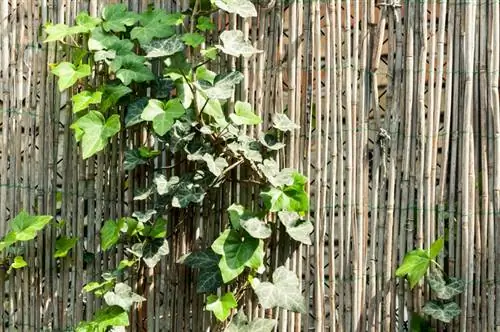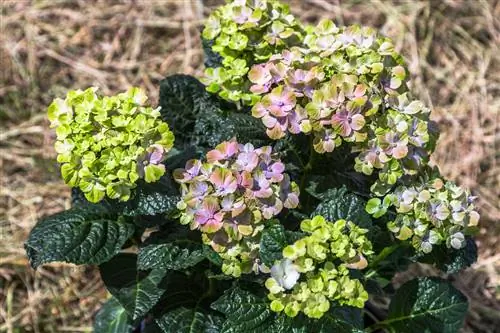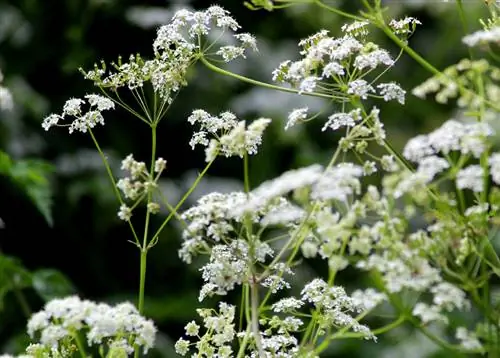- Author admin [email protected].
- Public 2023-12-16 16:46.
- Last modified 2025-01-23 11:20.
Ivy is not very demanding when it comes to its light requirements. The climbing plant grows in the shade and prefers semi-shady locations. Ivy also likes direct sunlight, but only for a short time. This is especially true for the midday sun, which can cause sunburn on the leaves.

Can ivy tolerate direct sunlight?
Ivy tolerates various lighting conditions, but prefers partially shaded locations. Direct sunlight, especially midday sun, can cause sunburn on the leaves. Direct midday sun should also be avoided indoors.
Ivy outdoors
Ivy can be grown almost anywhere outdoors. This means it can also be combined well with roses that need a lot of sun.
In general, ivy copes better with locations where it is bright but not too sunny, especially at the beginning. Good places are east and north locations, for example as a privacy screen or for greening facades.
Ivy also grows excellently as a ground cover under trees and bushes. Here it only receives a few hours of sun a day. When caring for the pot on the balcony, look for a partially shaded place if possible.
Some varieties of ivy turn red in the sun
There are a few varieties of ivy whose leaves turn red in the sun. This is a normal process that is triggered by the pigments contained in the leaves. The leaves in the shade remain green.
The leaves also turn red when the temperatures drop in autumn.
Red ivy varieties are, for example:
- Steinweiler
- Kobby
- Nuthole
- Artropurpurea
The age form tolerates the sun better
While young plants can't tolerate too much sun, the older form of the ivy doesn't mind the sun anymore. The plant then no longer climbs, but only grows upwards.
Protect ivy in the room from too much sun
In the room, the sun can actually harm the ivy. The plant also wants to get enough light here, otherwise the shoots will become too long and thin - they will curl, as the gardener calls this process.
Direct sunlight at midday, however, should definitely be avoided. If the plant is in the flower window, shade it with a curtain or move it further into the room.
Tip
Colorful ivy species require more light and sun than the well-known common ivy. In order for the colors to be beautifully strong, the plant should receive at least four hours of sun per day - but not necessarily direct midday sun.






